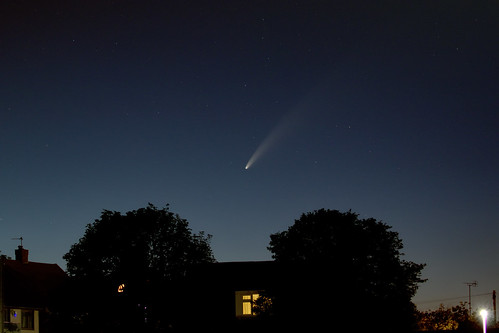21 – 22 July 2020, 23:00 – 1:00
Conditions: Started mild, ended chilly (much like the previous night). Light breeze. Some light pollution spilling over from next door (I’m glad I didn’t leave those last three Messiers until tonight).
Seeing: Poor
Transparency: Average
I’d been hoping to revisit the various Sagittarius nebulae with the Astronomik OIII and tonight seemed like the perfect opportunity to use a filter. Observations at 92x unless otherwise stated.
NGC 6445, planetary nebula, Sagittarius
Conspicuous-sized ghostly disc on the western side of the constellation. Quite bright in OIII. Averted vision transformed the disc into a ring, with brighter segments to the north and south.
M8, Lagoon Nebula, Sagittarius
The nebulosity becomes even more expansive in the OIII filter, filling most of the fov of the Ethos (at the expense of the starlight, which is greatly subdued). The large rift dividing the cluster from the brightest part of the nebula now looks like a dark crescent surrounded by nebulosity. On previous occasions I’ve found it difficult to reconcile the telescopic view of M8 with the familiar one seen in images, but tonight it really did start to resemble a photo (minus the colour of course).
Another bright ISS pass (nearly overhead) at 23:20 – 23:25.
M20, Trifid Nebula, Sagittarius
The Trifid seemed distinctly larger and – while not particularly bright – stood out from the background sky much better in the OIII filter. The dark lanes showed well in averted vision. It took a little more effort than M8, but again, it did start to resemble a black-and-white photo (but without the reflection nebula component).
M17, Swan Nebula, Sagittarius
Very bright in the OIII filter; the elongated swan shape is so distinctive that once you’ve seen it a few times it’s hard to see anything but a swan. It almost appeared to be frozen in the act of gliding through space. The area immediately to the north (directly beneath the “body”) was very dark by contrast, as if the swan is riding on black ice or on the surface of an impenetrably dark lake. The nebula itself was mottled, including a dark band cutting across the neck, although I think these dark features are easier to see at 133x. Also noticed a little detached portion of nebulosity directly above the head.
M16, Eagle Nebula, Serpens
Not especially bright, even in OIII, but the bird-like shape was more apparent. The filter transformed the nebula into a broad, diffuse band of light which appeared to curl (like wings) around the cluster. averted vision showed a wedge of darkness cutting into the nebula from the eastern side, but it was ill-defined, certainly not as dramatic as the photographic appearance.
Subsequent observations at 171x (no filter).
NGC 6717 (Palomar 9), globular cluster, Sagittarius
Small, grainy glow just south of 5th magnitude Nu2 Sgr – not hard to spot despite the glare from the star. Condensed with averted vision, which also revealed a second bright spot north-east of the core. An interesting object (the globular equivalent of NGC 404 in Andromeda).
Rounded off the session with a look at Jupiter and Saturn, followed by some imaging of the same. Variable seeing limited the quality of the results.

